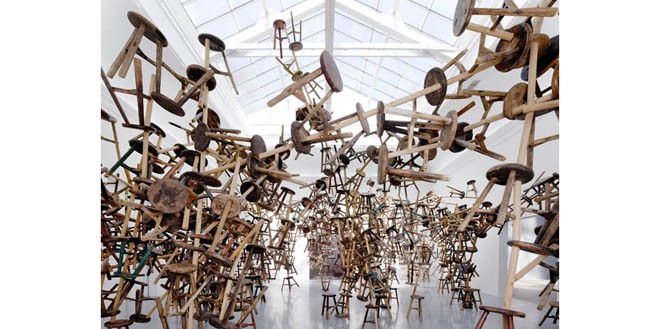

Several years ago an artist handed me his business card (yes, artists also carry these pieces of printed papers!) which stood out for its unusualness. Besides the name, it had the artist’s brief bio-data mentioning all ‘achievements’ on one side and his passport size colour photograph on the other. As it happened, the card couldn’t do much as the painter remained an obscure figure. But the unique layout, design and content heralded a new phase in our cultural sphere.
That was the first glimpse of the era that was going to be associated with personality rather than ideas. Actually, with the beginning of modernism, the significance of the maker was recognised more than the value of what is created. Till the time when the artists started to proclaim any object from life as art and the public had to accept it despite enormous doubts on the nature of that creative act.
Hence, people visiting museums of modern and contemporary art admire a shovel hanging on the wall (Marcel Duchamp), a bottle rack placed on a pedestal (Duchamp), bricks arranged in a line on the floor (Carl Andre) and stools stacked inside a gallery space (Ai Wei Wei) as pieces of great aesthetic expression.
The cult of personality has crept up in our environment in many ways. Beyond art, in other areas of our existence, we are surrounded with images of people for all purposes. The biggest example of this fascination with faces is seen during an election campaign where it is deemed enough to project the portraits of leaders, candidates and workers. The banners/posters are composed in order of stature: thus the pictures of party heads are most prominent while the lesser cadres are reduced in scale, ending with workers who appear as just tiny dots.
One feels this unconscious scheme of arranging personalities on banners etc. is similar to their actual role in our political system. The preference for putting up faces rather than a slogan or programme trickles down to signboards of various shops, especially those selling foods of all sorts. Owners of these eating places (offering delicious chickpeas, fish, curries of various kinds, other traditional cuisines, fresh juices or sweetmeats) appear smiling next to the name of the shop and a picture of the product. Without anyone realising that these people, aggressively marketing themselves, got famous on the basis of popularity of their specialities.
Belief in the power of the individual is so dominant in our lives that it has ceased to be an oddity. Instead, this seems the only course to successfully promote one’s products. This mindset has taken over the art world. Besides the artists’ intellectual excellence or artistic capabilities, their physical appearance is also crucial in attaining a due place in the profession. One isn’t surprised to see the artists at art exhibitions, especially during art fairs, biennales and triennials looking more like fashion models with their attire, hairstyle, footwear and general demeanour.
In the local scene too, one is astonished at the extent of ostentation at art events. Gone are the days when artists were clad in ragged clothes and men had unshaven faces. Today most of our artists are admired for their looks and good fashion sense along with their creative art works.
Compared to the past, this situation presents an interesting perception of the artist. Yet it also poses a basic question: is the appreciation of artists’ work dependent upon the quality of their art or admiration for their appearance. Artists who are a self-doubting species are equally concerned about these issues so some of them have devised a game for addressing the matter of appreciation. You can also join in this comparative exercise by putting up the work of an extremely beautiful artist along with the work of a not-so-charming one and see the kind of response including the compliments and offers of exhibitions etc. You will be surprised to see the difference even if the works match in terms of quality.